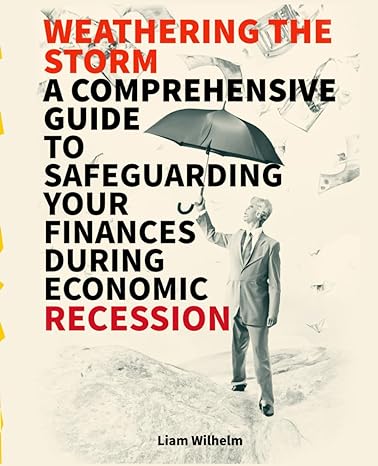Question
Week 5 - Ch 6 - Discussion Questions 1, 2 The Time Value of Money (TVM) is a fundamental concept in finance. As such formulas,
Week 5 - Ch 6 - Discussion Questions 1, 2 The Time Value of Money (TVM) is a fundamental concept in finance. As such formulas, tables, spreadsheets, and manual calculations yield correct answer depending on the set-up and needs. Compounding and discounting interest rates for a time period, periodic payments, and time periods and time direction are variables of the formulas to yield answers. Here's a table unifying some of the formulas. It can be used in conjunction with pages 286 of Zelman 5th ed. (284-285 of Zelman 4th ed.), or, of course Excel.
I suspect most of you have dealt with interest calculations since secondary school math. You may have used 'cash flow or TVM' diagrams to visualize the effect of each variable.
Compared to Exhibit 6.3, page 264, (Zelman 4th or 5th ed.) here's a graph of the loss of a dollar over time due to various inflation rates.
You may have heard of the 'Rule of 72' , Notice on this graph how much time it takes for $1000 to lose value to $500 at 7% rate. As a refresher, I suggest you exercise your (financial) calculator or Excel spreadsheet to verify some of the calculation examples in Zelman. If you use Excel formulas, DO NOT enter commas in the dollar amounts. Instead of 10,000, use 10000. Enter dollars paid out as a negative number and enter interest rate as a percent. Understanding Present Value calculations as per Zelman pages 267-270 5th Ed (pages 267-269 4th Ed.) is good preparation for upcoming Chapter 7 "The Investment Decision" materials. Notice the different answers of entering '-16,105' instead of '-16105'; '16105' instead of '-16105'; and '10' instead of '10%' in Exhibit 6.8 Simply remember: Present Value ---- compounding into the ----> Future Value Present Value <--- discounting from the ----- Future Value This week's questions are directly from Zelman, page 287 5th ed. (page 286 4th ed.). They should be straightforward and give you plenty of time to catch up, take a short break, or read ahead.
The chapter is short but the subject matter is a fundamental topic in finance.
Question 1 (= Zelman Question 8) What is the relationship between the present value factor and the future value factor? Question 2 (= Zelman Question 9) a) What happens to the present value factor as the discount rate or the interest rate increases for a given period of time? b) As the discount rate or the interest rate decreases?
Step by Step Solution
There are 3 Steps involved in it
Step: 1

Get Instant Access to Expert-Tailored Solutions
See step-by-step solutions with expert insights and AI powered tools for academic success
Step: 2

Step: 3

Ace Your Homework with AI
Get the answers you need in no time with our AI-driven, step-by-step assistance
Get Started


